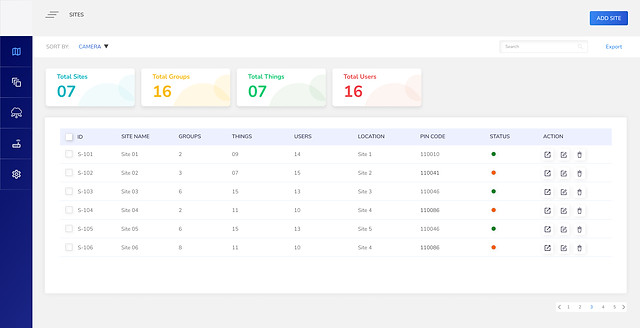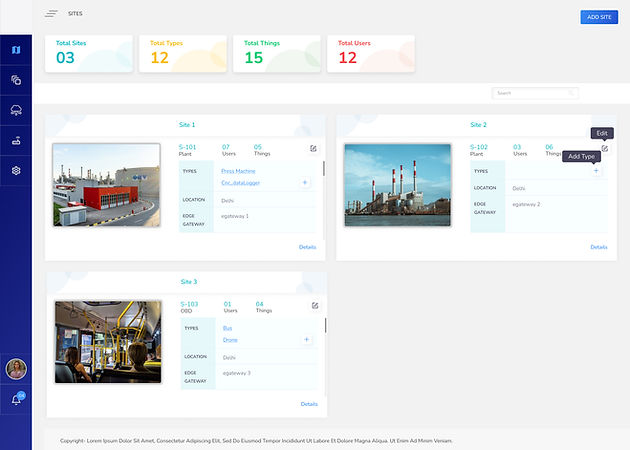AHONA BANERJEE
Revolutionizing Manufacturing:
An Industry 4.0 Smart Factory Solution
INDUSTRY 4.0
HCI
2022
Facilitated comprehensive data-driven decision-making for factory managers and stakeholders for increased productivity.

Introduction
The Industrial Internet of Things (IIoT) is transforming industrial operations and energy management by connecting instruments, sensors, and devices to computer-driven applications. This interconnected ecosystem, powered by cloud computing, improves automation and process optimization.
Artificial intelligence, cyber security, cloud computing, edge computing, and data mining are critical to its success. IIoT enables real-time data exchange, analytics, and predictive maintenance, increasing operational efficiency and cost-effectiveness. It is a transformative force, reshaping industries with intelligent, interconnected systems that increase productivity, reliability, and sustainability. In this digital transformation, IIoT defines the future of industrial processes by fusing technology and industry expertise.
Objective
Implement a comprehensive productivity monitoring system capable of actively tracking and optimizing productivity levels throughout the day, with a particular emphasis on identifying and reducing bottlenecks in various processes, while ensuring compatibility and integration with a diverse range of machinery across various operational environments.
Tech
-
This project introduces an Industry 4.0 Smart Factory Solution, revolutionizing manufacturing processes. Leveraging the Industrial Internet of Things (IIoT), the system integrates instruments, sensors, and devices for real-time data exchange and analytics.
-
Key technologies driving the solution include cloud computing, artificial intelligence, edge computing, cyber security, and data mining. These elements synergize to optimize automation and process efficiency while ensuring robust security measures.
-
A central component is a comprehensive productivity monitoring system. This system actively tracks and optimizes productivity levels, focusing on identifying and mitigating bottlenecks across diverse operational environments.
-
Designed for seamless integration, the solution ensures compatibility with various machinery. By merging technology with industry expertise, this project shapes the future of manufacturing, enhancing reliability, sustainability, and operational efficiency.
Scope
The scope of this project at the site level includes a wide range of transformative initiatives.
-
It involves integrating cutting-edge technologies such as the Internet of Things (IoT), artificial intelligence, and automation to optimize operations.
-
This includes real-time data collection, predictive maintenance, and improved quality control.
-
The site-level solution promotes machine-to-machine communication, increasing production efficiency, reducing downtime, and improving resource allocation.

Navigation
Tenant Level Menu
Site Level Menu



Design Decisons
-
In one of the later iterations, it was decided to switch to a card format, allowing the solution to provide a comprehensive and user-friendly data display.
-
The card format allows for easy referencing and quick access to critical information, improving data utilization efficiency across multiple applications.
-
Each card functions as a stand-alone unit, providing a neatly organized snapshot of critical data points.
-
This method not only simplifies data interpretation but also navigation, making it far more user-friendly.
-
The switch to card-based data presentation ensures that our users can easily access, analyze, and act on the information they require, resulting in more informed and effective decision-making.


Machine Details Screen: Light and Dark Mode


OEE Matrix
Overall Equipment Effectiveness (OEE) is a key performance indicator used in manufacturing and production environments to evaluate the efficiency and productivity of machinery and equipment. OEE is commonly presented as a matrix or score that quantifies the efficiency with which a machine or production process operates. It is often expressed as a percentage, with a higher percentage indicating improved overall equipment effectiveness.




Weld Cost
Weld cost in a factory refers to the expenses associated with welding processes and operations in manufacturing. Effective weld cost management is critical for improving manufacturing efficiency and ensuring that the welding process is cost-effective. This entails monitoring and controlling these cost components in order to minimize expenses while maintaining the desired quality and productivity in the welding process.



Design Challenges
-
Visual representation of huge Complex data on just one screen while making sure to avoid information overload.
-
Effortlessly channeling information from Site Details to the visualization of machine-level KPIs, ensuring a smooth and intuitive flow.
-
A versatile Design System offering a harmonious color palette for both Light and Dark modes, allowing for seamless integration across various interfaces.

